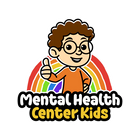|
Key Takeaways:
- Adverse Childhood Experiences (ACEs) have potential consequences that persist into adulthood.
- Examples of ACEs include abuse, neglect, household challenges, and loss.
- Prevention strategies, including learning healthy parenting skills, can help reduce the risk of ACEs and promote healing.
|
Some individuals experience Adverse childhood experiences (ACEs), which are highly stressful or traumatic events during childhood or adolescence. These experiences can range from abuse and neglect to household challenges like parental separation, substance abuse, or exposure to violence.
ACEs can have lasting effects on mental, emotional, and physical health. Once we understand these effects, we can help parents, educators, and caregivers support young people with prevention and healing.
What are Adverse Childhood Experiences?
Adverse Childhood Experiences (ACEs) are distressing and damaging events that happen to children from birth to age 17. These can include abuse, neglect, violence, or losing a loved one to suicide [*].
Family circumstances, which can also be considered ACEs, can disrupt a child’s sense of safety and stability. Examples include living with a caregiver who has substance use issues or witnessing parental divorce.
Note that other experiences may also be considered ACEs if they deeply affect a child’s emotional and physical health.
What are Common Causes of Adverse Childhood Experiences?
Research shows that three out of four students report experiencing at least one ACE during their childhood. Moreover, nearly one in five students face four or more ACEs, which puts them at a significantly higher risk for long-term consequences [*].
Here is a list of ACEs:
-
Abuse: Emotional, physical, and sexual
-
Neglect: Physical and emotional
-
Household challenges: Living with an adult who struggles with substance abuse, a parent or caregiver with untreated depression, anxiety, or other mental health disorders, domestic violence, parental divorce
-
Community factors: Poverty, being exposed to violence, racism, or discrimination
-
Loss and grief: Death of a loved one, being abandoned
-
Health-related: A chronic illness, mental health issues
How Common are Adverse Childhood Experiences?
ACEs are very common and they affect many children and teens from different backgrounds. Here are some key statistics about the prevalence of ACEs based on a meta-analysis of 206 studies [*]:
- Six out of ten adults reported experiencing at least one ACE before the age of 18.
- One in six adults reported experiencing four or more ACEs.
- 55.2% of individuals with substance abuse or addiction issues reported experiencing four or more ACEs.
- In low- and middle-income countries, 6.75% to 88.31% of people reported four or more ACEs.
- Among racial or ethnic groups, 12.1% of White individuals, 21.5% of Black individuals, 25.6% of Latinx individuals, and 40.8% of Indigenous/Native American individuals reported four or more ACEs.
These numbers show how common ACEs are and how they affect some groups more than others.
Who is at Risk of Having an Adverse Childhood Experience?
While ACEs can happen to anyone, some individuals are more likely to experience them because of their specific circumstances.
Some groups who are more likely to face ACEs include:
- Children living in poverty
- Children getting exposed to violence
- Minoritized racial and ethnic groups (due to systemic racism, discrimination, and historical trauma)
- People without stable housing
- Families affected by parental separation or divorce
- Individuals with family mental health or substance abuse problems
- Children dealing with long-term illnesses
- LGBTQIA2+ individuals (due to the unique challenges they face, such as rejection and bullying)
What are the Signs of Adverse Childhood Experiences?
ACEs can affect young people in many ways. These experiences usually show up in their behavior, emotions, and even their physical health.
An adverse childhood experience example might be a child who has been exposed to neglect, and as a result, they may struggle with feelings of anxiety or frustration.
Parents, caregivers, and mental health professionals should watch for these signs and symptoms:
-
Emotional changes: Feeling sad, anxious, or easily frustrated
-
Behavior changes: Kids might act out more than usual, withdraw, or show aggression
-
Physical symptoms: Frequent headaches, stomachaches, or difficulty sleeping
-
Poor self-esteem: Kids might believe they aren’t good enough
These signs can vary depending on the child and their situation.
Adverse Childhood Experiences Can Have a Lasting Impact on Adults
Childhood trauma can cause physical and mental health problems later in life. For example, adults who have faced ACEs are more likely to develop serious health conditions such as heart disease, diabetes, and cancer [*]. This is because prolonged stress from early trauma can harm the body’s systems over time.
As for mental health, adults with repressed childhood trauma may experience chronic anxiety, which would show up as a constant state of worry or fear. Early trauma can also lead to difficulty trusting others or having the fear of abandonment.
Consider someone who grew up in a home where they were often ignored or not cared for properly. As an adult, they might find it hard to develop close friendships or relationships because they didn’t learn how to feel safe with others growing up. They might also feel nervous all the time.
Therapists are trained to recognize these signs of childhood trauma in adults, even if the person doesn’t realize their past is affecting them. Working with a mental health professional helps clients spot these patterns and begin healing.
How are Adverse Childhood Experiences Treated?
Treatment for ACEs can vary depending on the individual’s needs, but the goal is always to help the person heal and develop healthy coping strategies. Some common treatments and management strategies include:
-
Therapy and counseling: Talking to a therapist, especially one trained in trauma, can help individuals process their experiences. Examples of therapy for ACEs include Cognitive Behavioral Therapy (CBT) and Dialectical Behavior Therapy (DBT).
-
Medication: Sometimes, doctors may suggest medication to help with symptoms of depression, anxiety, or other mental health issues caused by ACEs.
-
Mindfulness and stress reduction techniques: Techniques like deep breathing, meditation, and yoga can help reduce the stress and anxiety that come with ACEs.
-
Supportive relationships: Having trusted people like caregivers, mentors, or community leaders around can give clients a sense of stability. These people can help you feel safe and listen to you.
In addition to these therapies, other approaches, such as art therapy or play therapy are effective for children.
How Can Adverse Childhood Experiences Be Prevented?
Prevention is key to breaking the cycle of trauma. Here are ways that ACEs can be prevented:
- Learn about the early warning signs of trauma in children. This allows you to step in before it becomes a bigger problem.
- Teach healthy parenting skills. Some programs teach positive discipline, communication, and ways to handle stress. These help parents build strong relationships with their kids.
- Connect children with positive role models. These include mentors, coaches, or other trusted adults whom kids can look up to and learn from.
- Teach both children and adults healthy ways to manage conflict. This reduces the chances of violence.
- Make sure children and families have access to healthcare services, including mental health care. These services will address untreated issues early.
- Promote safer schools. Anti-bullying programs and counseling services reduce trauma by giving appropriate support.
The Bottom Line
Adverse Childhood Experiences (ACEs) are common and can have lasting effects on a child’s mind, emotions, and body. While these experiences can be incredibly difficult, there is still hope for healing.
If you’re looking for more information or tools for support, check out our Trauma Worksheets.
References:
- About adverse childhood experiences. (2024, October 8). Adverse Childhood Experiences (ACEs). https://www.cdc.gov/aces/about/index.html
- Swedo, E. A., Pampati, S., Anderson, K. N., Thorne, E., McKinnon, I. I., Brener, N. D., Stinson, J., Mpofu, J. J., & Niolon, P. H. (2024). Adverse childhood Experiences and Health Conditions and risk behaviors among high school students — Youth Risk Behavior Survey, United States, 2023. MMWR Supplements, 73(4), 39–50. https://doi.org/10.15585/mmwr.su7304a5
- Madigan, S., Deneault, A., Racine, N., Park, J., Thiemann, R., Zhu, J., Dimitropoulos, G., Williamson, T., Fearon, P., Cénat, J. M., McDonald, S., Devereux, C., & Neville, R. D. (2023). Adverse childhood experiences: A meta‐analysis of prevalence and moderators among half a million adults in 206 studies. World Psychiatry, 22(3), 463. https://doi.org/10.1002/wps.21122
- Jackson, D. B., Testa, A., Woodward, K. P., Qureshi, F., Ganson, K. T., & Nagata, J. M. (2022). Adverse Childhood Experiences and Cardiovascular Risk among Young Adults: Findings from the 2019 Behavioral Risk Factor Surveillance System. International Journal of Environmental Research and Public Health, 19(18), 11710. https://doi.org/10.3390/ijerph191811710





















































